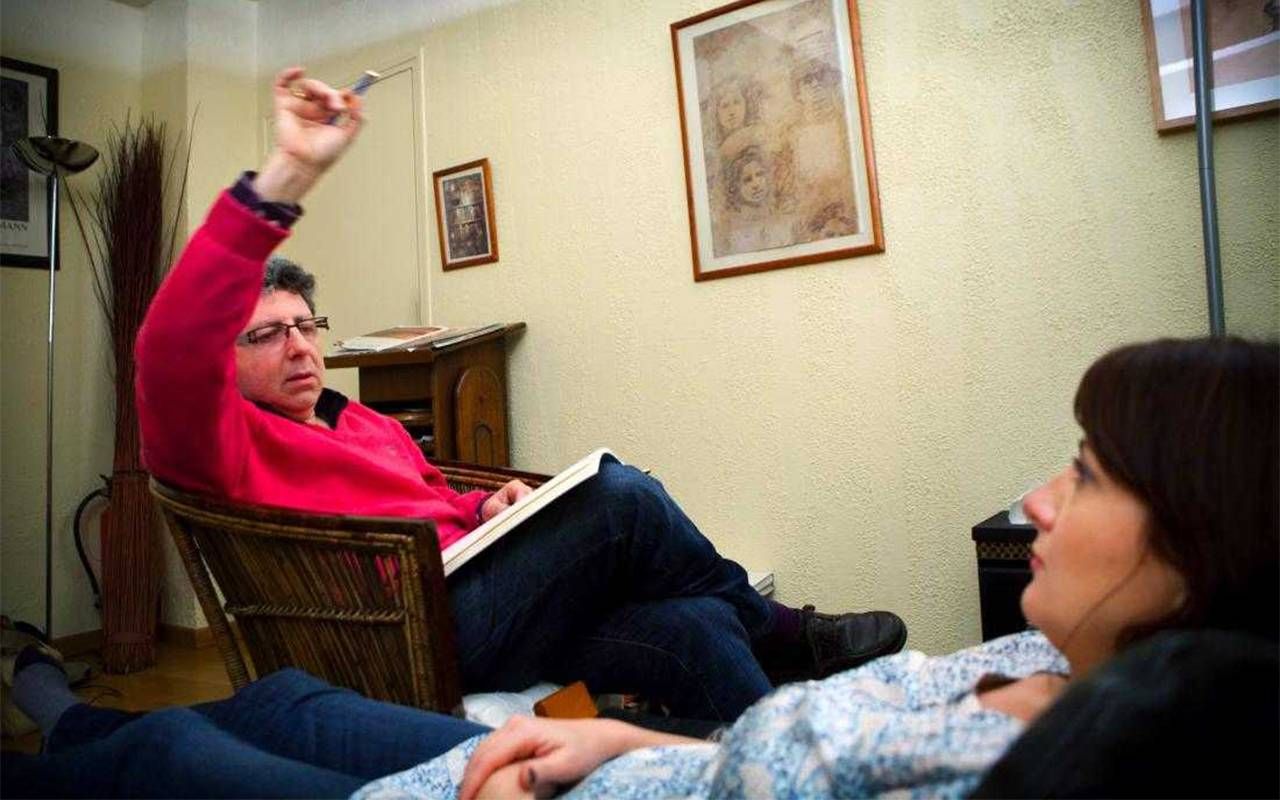Navigating Grief with EMDR Therapy
Memories of my husband's death led me to try EMDR (Eye Movement Desensitization and Reprocessing), and here is what I learned.
Three years after my husband died suddenly of a heart attack, I continued to feel paralyzed, as if it happened yesterday. I read books, connected with friends and spent time outdoors. I did everything I was supposed to do, but I could not find a way through my grief.

Then a friend recommended I try Eye Movement Desensitization and Reprocessing (EMDR) therapy. Although I wasn't sure what to expect, I could not believe the transformation that occurred over just a few months. EMDR helped me to break out of my trance and start living again.
Understanding EMDR and How It Works
EMDR is a relatively new treatment technique. The first clinical trial investigating EMDR was conducted in 1989. EMDR was originally used to treat combat veterans who experienced severe PTSD. However, Lisa James, a California-based certified EMDR therapist, emphasizes that "EMDR is not just for the capital T - Trauma but also for the smaller traumas that impact us as we move through life."
"EMDR desensitizes the body disturbance and the negative belief connected to it, clearing the mind, body and spirit."
Unlike traditional therapy, EMDR does not involve talking through the traumatic event. Instead, it focuses on the emotions, thoughts and behaviors that come up when we remember a traumatic event. James describes what happens during the EMDR process: "It gives you perspective, a way of seeing the event differently. EMDR desensitizes the body disturbance and the negative belief connected to it, clearing the mind, body and spirit."
While the EM in EMDR stands for Eye Movement, this is not required for the therapy to work; in fact, the powerful effect of EMDR comes from Bilateral Stimulation, moving from left to right in the body. This can be achieved with tapping, vibrating sensors, eye movement or binaural tones. Many of these types of bilateral stimulation can also take place virtually.
What to Expect from EMDR Treatment
EMDR treatment has eight phases. The first two phases are conducted during the first session, while the following phases are repeated in subsequent sessions as many times as necessary to fully process the memory of the traumatic event.
Phase 1: History-taking and Treatment Planning
In the first phase, the patient talks with the therapist to determine the most disturbing target memory. When I began my treatment, I was haunted by the vision of finding my husband's body after he suffered a heart attack. Because I could barely even speak these words to my therapist, she suggested that we start with a more accessible memory. I selected a memory of the Celebration of Life that we held for my husband a month later. Since he was an avid surfer, we held a paddle out, a ritual where surfers paddle out in the ocean and form a big circle on the water to remember the deceased. I paddled out into the high surf with the rest of his friends, but I was not as strong on the water and was pulled under.
In the first phase, the patient talks with the therapist to determine the most disturbing target memory.
My therapist asked me to identify a positive affirmation to accompany the traumatic incident. I felt so powerless as I remembered being dragged under the waves. To recontextualize the event, my positive cognition became "I am strong." Rather than dwell on the negative, this step helped me to identify what I wanted to feel when I reflected on the event.
Phase 2: Preparation and Education
Next, the therapist explains the treatment and introduces the procedures. Since we were conducting the sessions over Zoom, my therapist recommended tapping rather than eye movement to activate the bilateral stimulation; this enabled me to close my eyes and feel the emotions as they came up. I crossed my arms in front of me like I was hugging myself while tapping on my left and right shoulders with opposite hands.
Phase 3: Assessing the Target Memory
The third step is assessing the target memory for two quantities. The Validity of Cognition scale measures how true the positive cognition feels. I was evaluating how true "I am strong" felt. The other assessment is called a Subjective Units of Disturbance scale; this measures how troubling the target memory feels. We would continue to assess the memory after each session; I could chart my trajectory and see that I was making progress.
Phase 4-7: Processing the Memory to Resolution
The next step is to desensitize the memory. This is where the magic of EMDR takes place. During this phase, I focused on the memory of the paddle out while tapping. Periodically, my therapist would have me stop and open my eyes to tell her what came up. During this stage, I remember deciding to go out on the water; I remember how strong the surf was. I slowed down and looked around; I saw many people deciding to stay on the shore. With EMDR, I was able to see that I was brave for participating in the paddle out, even if it wasn't with grace.
"The body holds trauma; we may start to notice that stomach aches are connected to the memory of an event. Once that trauma has been processed, the stomach aches, or other physical manifestations, will also release."
As images and emotions came up, I was not required to explain everything to my therapist; sometimes, she would have me recognize and breathe out whatever I was feeling. This helped me take a step back and see the event with a fresh perspective as if watching it on TV. It even helped me to laugh at it; all the while, I felt my husband there with me in spirit, telling me that I was strong.
As described in Chapter 5 of "The Body Keeps the Score," by Bessel Van Der Kolk, we hold much of our trauma in our bodies; the next phase involves doing a body scan to help us identify where we are holding the stress.
During this stage, my therapist asked me to feel my body and notice where I felt the disturbance; sometimes, it was in my shoulders as I remembered struggling to stay afloat in the ocean. EMDR is powerful because, as James explains, "The body holds trauma; we may start to notice that stomach aches are connected to the memory of an event. Once that trauma has been processed, the stomach aches, or other physical manifestations, will also release."
If the memory of the traumatic event has not been fully resolved, the next stabilization phase helps to contain the memory so we can move on with life. My therapist asked me to visualize putting the feelings in a box, and she made sure that we did not end the session until I felt calm and safe.
Phase 8: Re-Evaluation
The final step is usually conducted at the beginning of the next session. With EMDR, our mind continues to process the traumatic events in the background. Returning to the memory a week later, I was often surprised by how different I felt about the event. Once I had fully processed the paddle out, I was able to move on to the memory of finding my husband's body after the heart attack. Now, I could face it, knowing that I was strong. Behind this memory, I realized I was carrying guilt. I felt I should have been there; perhaps I could have saved him. Once I opened my heart to those around me, instead of feeling that I had done something wrong, I could finally move forward; I could love again and be present for those around me.
Start Living Again
While we do not understand precisely how EMDR works, the structure of EMDR systematically moving through these 8 phases provides a scaffold for the mind to work through traumatic events safely. By accessing the memories in a very specific way combined with bilateral stimulation and guided input from a therapist, the traumatic event is reprocessed, allowing the mental injury to heal. If you feel like you are stuck in a cycle of grief and not able to move forward, EMDR may be what you need to open up and start living again.


